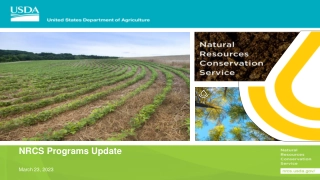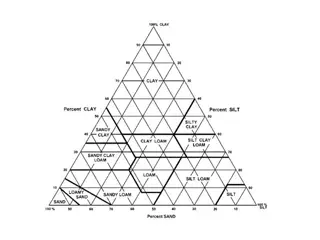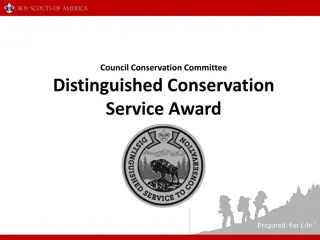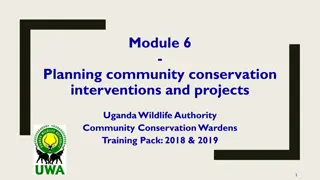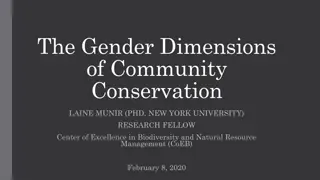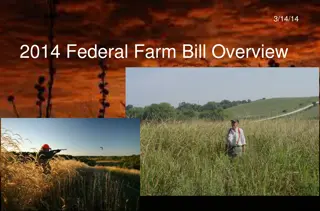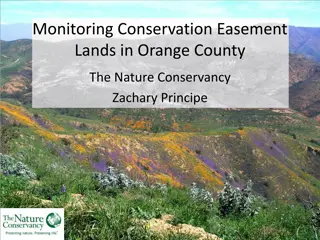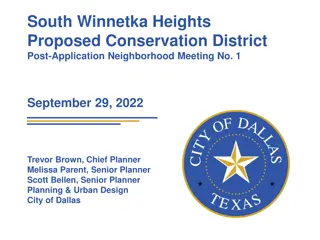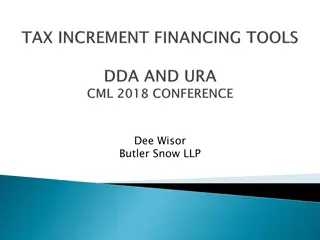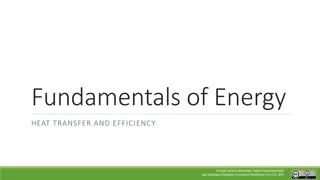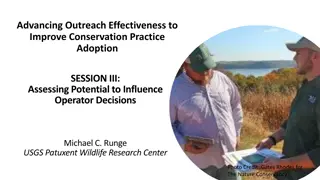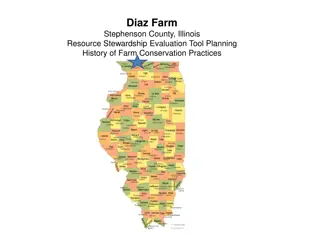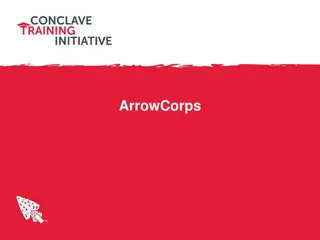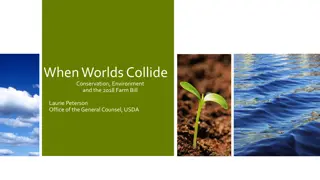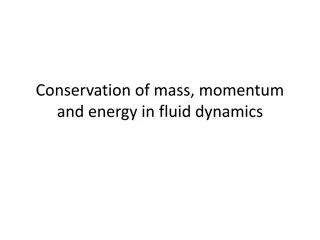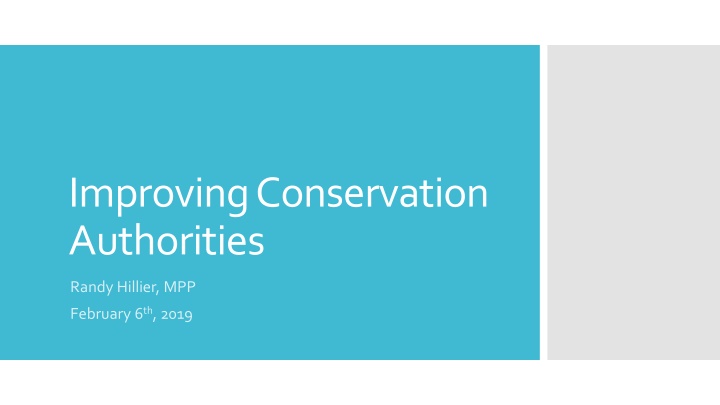
Improving Conservation Authorities in Ontario - Audit Findings and Ministry Response
Explore the efforts to enhance conservation authorities in Ontario. Delve into the Auditor General's value-for-money audit of the Niagara Peninsula Conservation Authority (NPCA) and the Ministry's response to establish regulations for clear roles and responsibilities. Learn about the unique aspects of conservation authorities in Ontario and the proposed steps towards better clarity and accountability.
Download Presentation

Please find below an Image/Link to download the presentation.
The content on the website is provided AS IS for your information and personal use only. It may not be sold, licensed, or shared on other websites without obtaining consent from the author. If you encounter any issues during the download, it is possible that the publisher has removed the file from their server.
You are allowed to download the files provided on this website for personal or commercial use, subject to the condition that they are used lawfully. All files are the property of their respective owners.
The content on the website is provided AS IS for your information and personal use only. It may not be sold, licensed, or shared on other websites without obtaining consent from the author.
E N D
Presentation Transcript
Improving Conservation Authorities Randy Hillier, MPP February 6th, 2019
On October 25, 2017, in light of mounting criticisms of the NPCA, the Standing Committee on Public Accounts of the Legislative Assembly requested that the Auditor General conduct a value- for money audit of the NPCA. Background Conservation authorities are unique to Ontario. In most other Canadian jurisdictions, provincial and municipal governments deliver the key programs and services that in Ontario are delivered by conservation authorities
From the Conservation Authorities Act, 1990 Regulations by authority re area under its jurisdiction 28 (1) Subject to the approval of the Minister, an authority may make regulations applicable in the area under its jurisdiction, (a) restricting and regulating the use of water in or from rivers, streams, inland lakes, ponds, wetlands and natural or artificially constructed depressions in rivers or streams; (b) prohibiting, regulating or requiring the permission of the authority for straightening, changing, diverting or interfering in any way with the existing channel of a river, creek, stream or watercourse, or for changing or interfering in any way with a wetland; (c) prohibiting, regulating or requiring the permission of the authority for development if, in the opinion of the authority, the control of flooding, erosion, dynamic beaches or pollution or the conservation of land may be affected by the development; (d) providing for the appointment of officers to enforce any regulation made under this section or section 29; (e) providing for the appointment of persons to act as officers with all of the powers and duties of officers to enforce any regulation made under this section. 1998, c. 18, Sched. I, s.12. Purpose of Conservation Authorities
The Ministry agrees that action needs to be taken to increase clarity in conservation authority roles and responsibilities. The Province will establish regulations outlining the programs and services conservation authorities are required to provide, including standards or other requirements to be met. These regulations will be developed in consultation with other ministries, municipalities, Indigenous communities, conservation authorities, stakeholders and the public. Once developed, these regulations will be supported with guidance designed to help conservation authorities fulfill these mandated requirements and report on their results. The Ministry s response to the audit
We found that the NPCA needs to improve its processes to ensure that it delivers programs and services economically, efficiently and in accordance with relevant legislation, regulations, agreements and policies Quotes from the Auditor General s Special Report on NPCA 2018 We also found that the NPCA does not have effective processes to measure, assess and publicly report on the operational effectiveness of its programs and services. As a consequence, the NPCA has not been able to fully demonstrate, and the Ministry and municipalities could not fully assess, how well the NPCA was fulfilling its legislative mandate to further the conservation, restoration
the Ministry also cannot assess how well any of the 35 other conservation authorities across the province are fulfilling their legislative mandate 75% of the conservation authorities we surveyed indicated that they encountered conflicts between conservation and development in the work they did. Quotes from the Auditor General s Special Report on NPCA 2018 The Province and municipalities could do more to oversee conservation authorities. neither the Province nor municipalities are involved to the extent necessary to assess how well conservation authorities are fulfilling their mandate. In addition, the Act does not give the Ministry or municipalities powers to intervene to address serious concerns with conservation authority
Neither the Ministry nor Municipalities Know How Conservation Authorities Are Fulfilling their Mandate. Quotes from the Auditor General s Special Report on NPCA 2018 The Act requires conservation authorities to provide their annual audited financial statements to the Ministry and participating municipalities. Beyond this, the nature and depth of information requested by these oversight bodies from conservation authorities vary. Neither the Ministry nor the participating municipalities have been involved to the extent necessary to assess how well conservation authorities have been fulfilling their mandate.
On the Conversation Authorities Core Mandate The NPCA does not have floodplain maps for 117 (or 58%) of the 202 watercourses in its watershed. These include 70 watercourses for which the Ministry recommends floodplain maps be prepared because they drain land areas 125 hectares in size or larger In our survey of conservation authorities, we found that this issue is not unique to the NPCA. Almost half (46%) of conservation authorities reported that they have mapped less than 50% of all watercourses in their watershedwith drainage areas of at least 125 hectares. Conservation Ontario s 2015 inventory of conservation authorities floodplain maps noted that three-quarters of the existing floodplain maps in Ontario are outdated In their response, The NPCA agreed that floodplain mapping is an important tool when reviewing and making decisions on development proposals and work permit applications and to forecast floods Key Findings From the Audit
Administrative spending has increased while spending on watershed services has decreased. expenses related to administrative support and corporate services increased by 49%, from $2.3 million in 2012 to $3.4 million in 2017. Spending on watershed services and management of conservation areas decreased by 18%, from $7.54 million in 2012 to $6.16 million in 2017. Key Findings From the Audit While administrative spending has increased, the Time to Review Development Proposals and Work Permit Applications Has Increased the average review time for proposals involving detailed site plans increased from 19 days to 72 days in this period
There are no effective processes to measure, assess and publicly report on the operational effectiveness of CA programs and services, therefore CAs cannot fully assess how well they fulfill their legislative mandate. Quote from AG report The Ministry also cannot assess how well any of the 35 other conservation authorities across the province are fulfilling their legislative mandate. Next Steps The need to strengthen oversight and accountability of CA s has been publicly recognized by the Province In response to recommendations in the AG report the Ministry is quoted as The Ministry Agrees that actions need to be taken to strengthen oversight and accountability in decisions made by Conservation Authorities.

